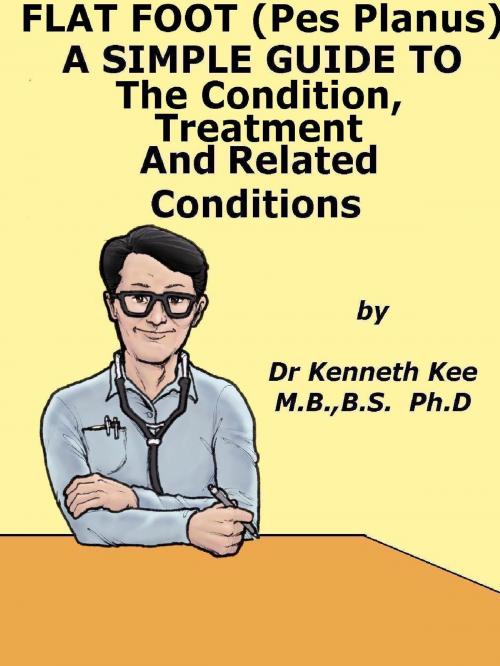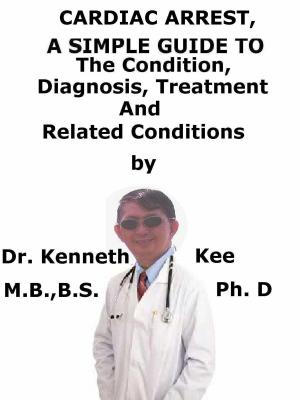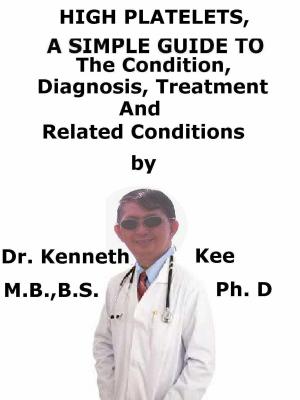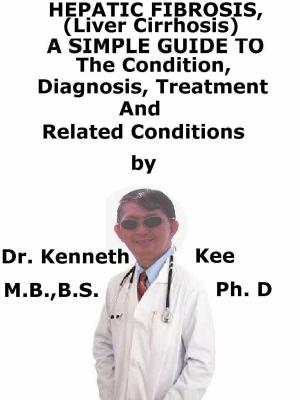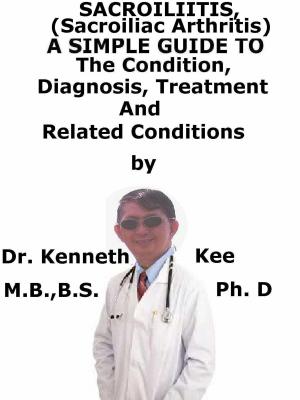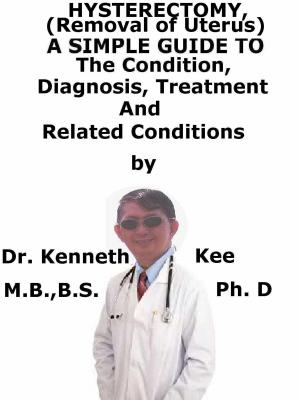Flat Foot (Pes Planus), A Simple Guide to The Condition, Treatment And Related Conditions
Nonfiction, Health & Well Being, Health, Ailments & Diseases, Musculoskeletal, Medical, Specialties, Orthopedics| Author: | Kenneth Kee | ISBN: | 9781370424542 |
| Publisher: | Kenneth Kee | Publication: | October 23, 2016 |
| Imprint: | Smashwords Edition | Language: | English |
| Author: | Kenneth Kee |
| ISBN: | 9781370424542 |
| Publisher: | Kenneth Kee |
| Publication: | October 23, 2016 |
| Imprint: | Smashwords Edition |
| Language: | English |
Flat Foot (pes planus) is a common disorder of the foot characterized by the depression or loss of the medial longitudinal arch of the foot.
It is usually associated with valgus of the foot or eversion of the heel and abduction of the forefoot.
It is also associated with a tight Achilles tendon.
Flat foot is hereditary and associated with hyper mobility of the other joints
Symptoms:
1. Pain in the foot especially when standing for a prolonged period
2. Easy fatigability of the foot.
3. Certain weight bearing exercises like jogging or brisk walking makes the pain worse
Signs:
1. Absence of the medial arch is present
2. Hyper mobility of the foot is apparent
3. Mild genu valgum (knock knee) or internal tibial torsion is also present.
Diagnosis is by X-rays of the foot that usually show a loss of the normal arch and plantar flexion of the talus.
Conservative treatment:
1. No treatment is usually necessary if mild
2. Shoe correction may help temporarily
3. Exercises to stretch and loosen tight heel cords
4. Pain killers such as NSAID (non-steroidal anti-inflammatory drugs) for pain
5. Muscle relaxant to relax muscles especially the back
Surgery is usually not indicated in Flat Foot.
Rarely surgery is to tighten the muscles supporting the medial arch of the foot only for severe cases with symptoms of pain and to prevent complications.
Flat feet are not uncommon conditions in the world’s population.
However as they seldom give much problem except for the more severe ones; nothing is needed to do to treat the conditions.
Most people with flat feet adapt easily to their conditions shifting their feet if necessary and adjusting their movements accordingly.
My son and my brother in law are those with flat feet and although they have to serve their military national service, they had little problem with mobility.
There is no cure for flat foot but surgery may help in severe cases to prevent complications.
a. Excessive foot pronation (which usually occurs with PP) may contribute to the development of foot pain and foot problems such as:
c. Tibialis posterior dysfunction (because hyperpronation stretches this tendon).
d. Hallux valgus (because more weight is borne by the medial metatarsals when the foot hyperpronates).
c. Metatarsalgia (for the same reason)
d. Plantar fasciitis
e. Knee pain: one study found that off-the-shelf foot orthoses were beneficial for patellofemoral pain
f. Another study suggested that foot deformity may be linked to greater disability from knee osteoarthritis
g. PP may reduce the shock-absorbing features of the foot, potentially contributing to low back pain.
Prevention of complications with flat feet can be done by:
a. Avoid prolonged standing
b. Use shoes with medial arch correction pads
TABLE OF CONTENT
Introduction
Chapter 1 Flat Foot
Chapter 2 Interesting Facts about Flat Foot
Chapter 3 Treatment of Flat Foot
Chapter 4 Tibial nerve dysfunction
Chapter 5 Clubfoot
Chapter 6 Calcaneovalgus Foot
Chapter 7 Ankle Arthritis
Epilogue
Flat Foot (pes planus) is a common disorder of the foot characterized by the depression or loss of the medial longitudinal arch of the foot.
It is usually associated with valgus of the foot or eversion of the heel and abduction of the forefoot.
It is also associated with a tight Achilles tendon.
Flat foot is hereditary and associated with hyper mobility of the other joints
Symptoms:
1. Pain in the foot especially when standing for a prolonged period
2. Easy fatigability of the foot.
3. Certain weight bearing exercises like jogging or brisk walking makes the pain worse
Signs:
1. Absence of the medial arch is present
2. Hyper mobility of the foot is apparent
3. Mild genu valgum (knock knee) or internal tibial torsion is also present.
Diagnosis is by X-rays of the foot that usually show a loss of the normal arch and plantar flexion of the talus.
Conservative treatment:
1. No treatment is usually necessary if mild
2. Shoe correction may help temporarily
3. Exercises to stretch and loosen tight heel cords
4. Pain killers such as NSAID (non-steroidal anti-inflammatory drugs) for pain
5. Muscle relaxant to relax muscles especially the back
Surgery is usually not indicated in Flat Foot.
Rarely surgery is to tighten the muscles supporting the medial arch of the foot only for severe cases with symptoms of pain and to prevent complications.
Flat feet are not uncommon conditions in the world’s population.
However as they seldom give much problem except for the more severe ones; nothing is needed to do to treat the conditions.
Most people with flat feet adapt easily to their conditions shifting their feet if necessary and adjusting their movements accordingly.
My son and my brother in law are those with flat feet and although they have to serve their military national service, they had little problem with mobility.
There is no cure for flat foot but surgery may help in severe cases to prevent complications.
a. Excessive foot pronation (which usually occurs with PP) may contribute to the development of foot pain and foot problems such as:
c. Tibialis posterior dysfunction (because hyperpronation stretches this tendon).
d. Hallux valgus (because more weight is borne by the medial metatarsals when the foot hyperpronates).
c. Metatarsalgia (for the same reason)
d. Plantar fasciitis
e. Knee pain: one study found that off-the-shelf foot orthoses were beneficial for patellofemoral pain
f. Another study suggested that foot deformity may be linked to greater disability from knee osteoarthritis
g. PP may reduce the shock-absorbing features of the foot, potentially contributing to low back pain.
Prevention of complications with flat feet can be done by:
a. Avoid prolonged standing
b. Use shoes with medial arch correction pads
TABLE OF CONTENT
Introduction
Chapter 1 Flat Foot
Chapter 2 Interesting Facts about Flat Foot
Chapter 3 Treatment of Flat Foot
Chapter 4 Tibial nerve dysfunction
Chapter 5 Clubfoot
Chapter 6 Calcaneovalgus Foot
Chapter 7 Ankle Arthritis
Epilogue
